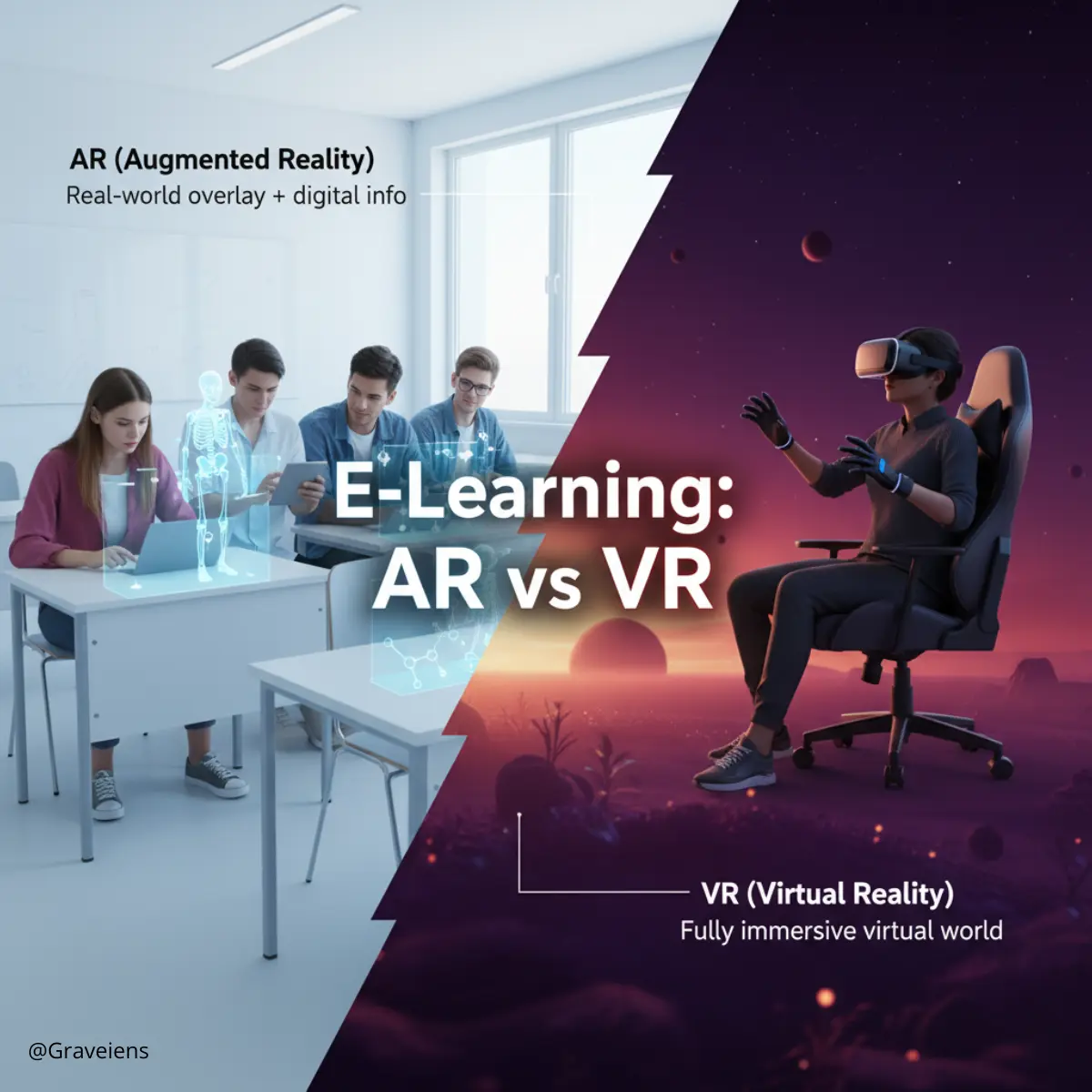You’ve probably heard of AR (Augmented Reality) and VR (Virtual Reality) thrown around a lot lately, especially if you’ve seen the latest tech trends or played any cool new games. But if you’re like me, you might get a little confused about which is which. I mean, they both sound pretty similar, right? But trust me, there’s a big difference between the two—and it’s way simpler than you think.
Let’s break it down and talk about what makes AR and VR different in a way that doesn’t make your head spin.
What Is AR ?
let’s start with AR , Augmented Reality is pretty much what it sounds like—it’s adding some extra stuff to your real world. Imagine this: you’re standing in your living room, and you open up your phone to play Pokémon GO. Suddenly, there’s a Pikachu hanging out in the middle of your floor. You can still see your living room, your couch, the lamp, everything around you, but now there’s this little Pokémon standing there, too. That’s AR!
In AR, you’re still seeing the real world. It’s just that digital stuff gets added to it. You can look around, interact with the world as usual, but you also get these digital elements overlaid right into your view. AR isn’t about replacing your world—it’s about adding to it.
Some Fun Examples of AR
- Pokémon GO: This is probably the most famous AR game. You’re walking around outside, looking for Pokémon in real places. You still see the trees, the sidewalk, the sky—everything around you—but now there’s Pikachu popping up in front of you.
- Virtual Try-Ons: Ever tried on glasses or makeup using your phone camera? You can see yourself with the new glasses or lipstick without actually putting them on. That’s AR, too!
- Navigation Apps: If you’ve ever used an AR-based map (like when you’re following directions in a city), you’ve experienced AR. You can see the road in front of you and get arrows or directions on top of that.
The point here is that AR lets you see the real world, with a digital twist.
What Is VR?
Alright, now let’s talk about VR—Virtual Reality. VR is a whole different game. It’s all about shutting off the real world and putting you into a completely new one. Imagine you put on a VR headset. The moment it’s on, you’re no longer in your living room. You’re transported to a totally different place. It could be a game, a virtual tour, or even a different planet! VR creates an entirely new, digital environment that you can interact with. And unlike AR, VR completely replaces what you see around you.
You can walk around in VR, look around, even “touch” things, but you’re not seeing your actual surroundings anymore. You’re totally immersed in the virtual world.
Some Fun Examples of VR
- Video Games: In games like Beat Saber or Half-Life : Alyx, you’re not just sitting in front of a screen—you’re literally in the game. You swing your arms, walk around, and interact with everything as if you’re part of the world.
- Virtual Travel: Let’s say you can’t travel to Japan, but you want to experience it. With VR, you can take a virtual tour of Tokyo. You’ll feel like you’re actually walking down the streets, seeing everything in 360 degrees.
- Simulations for Training: VR is super useful in real-world training too. For example, in medical schools, students use VR to practice surgery. They’re immersed in a digital environment where they can perform operations without any risk to real patients.
The key thing with VR is that it completely replaces your surroundings with a digital world. It’s not adding something to your reality like AR. Instead, it’s taking you out of your reality and immersing you in a new one.
So, What’s the Real Difference Between AR and VR?
I mean, it sounds like both AR and VR involve some sort of digital interaction, right? So what’s the big difference? Let’s break it down.
AR = Real World + Digital Stuff
With AR, you still get to see the world around you. AR just adds digital elements on top of your reality. So when you look around, you’re still in your living room, or walking down the street, but you also see virtual things—like games, guides, or products.
VR = Digital World Only
With VR, you’re in a completely digital world. When you put on a VR headset, you’re no longer seeing the real world at all. You’re immersed in a totally different environment, like a video game, a virtual city, or even a training simulation.
AR vs. VR: Which One Is Better?
Honestly, it depends on what you’re looking for. Both have their own super cool uses.
Why You Might Like AR
Still Love Being in the Real World?
For those who prefer to keep one foot in reality, AR is an absolute gem. It lets you experience cool digital stuff right here in your own surroundings. You’re still totally aware of everything around you – your living room, your park, your street – but now, you can see fun, interactive layers added on top. It’s like your world gets a digital upgrade!
Enjoy Games That Get You Moving?
If you’re a fan of games that encourage you to get up and go, AR is right up your alley. Think about how much fun it is with games like Pokémon GO, where you’re actually out walking, exploring your neighborhood, and discovering things as you play. It turns your everyday world into an exciting, interactive playground!
Want to “Try Before You Buy” – Virtually?
Ever wish you could test things out without all the fuss of heading to a store? AR makes it super easy. You can virtually “try on” new glasses, see how a new sofa would look in your living room, or even experiment with different makeup styles – all from your phone. It’s incredibly handy and takes the guesswork out of shopping.
Why You Might Like VR
- You want to escape into a new world: If you’re in the mood to really get away, VR is the way to go. You can completely immerse yourself in a new world—whether that’s for gaming, exploring, or even learning something new.
- You need realistic training: VR is perfect for training. It’s used in medical fields, aviation, and even the military because you can practice dangerous or high-risk situations without any actual danger.
- You’re into intense experiences: If you love games and want to feel like you’re really in them, VR is the next level. The virtual environments are designed to be realistic, so you’ll feel like you’re actually part of the action.
AR and VR Together: The Future Is Mixed Reality
We’re already starting to see Mixed Reality (MR), where AR and VR are used together. Think of it as the best of both worlds. With MR, you could have AR’s digital objects blending into your surroundings while being fully immersed in a VR world. Sounds wild, right?
For example, imagine being in a virtual game (like VR), but instead of just using a controller, you interact with the game using objects that appear in the real world (AR). You could be swinging a virtual sword with your real hands, while the virtual world responds accordingly.
The idea of MR is to give you the immersion of VR with the real-world interaction of AR. Pretty cool, right?
Wrapping Up: AR vs. VR
At the end of the day, AR is about adding to your reality, and VR is about completely stepping out of it. Both have unique uses, and you’re going to see a lot more of both in the future. Whether you want to explore a digital world or just add some extra fun to your day-to-day life, there’s a tech for that.
The best part? Both AR and VR are evolving every day, so who knows what new cool things we’ll be able to do with them next!
FAQ :
Neither is universally better; it depends on the goal. AR is better for real-time guidance and situational awareness, while VR is better for deep immersion and practicing complex skills in a distraction-free setting.
AR is used to overlay interactive content onto the physical environment. This provides contextual learning, such as displaying a 3D heart model on a student’s desk via their phone, making abstract concepts easier to visualize.
Virtual Reality (VR) offers a completely distraction-free learning environment because the user is fully isolated from the real world. Augmented Reality (AR), by keeping the user aware of their surroundings, carries a higher potential for real-world distractions.
Virtual Reality (VR) typically uses handheld controllers or specialized full-body tracking suits to allow the user to interact within the simulated world. Augmented Reality (AR) interactions are often simpler, primarily relying on touch input on a screen (smartphone or tablet) or hand gestures captured by a device camera.
Read Our previous blog : top-10-essential-skills-for-success-in-the-edtech-industry/



Comments 0